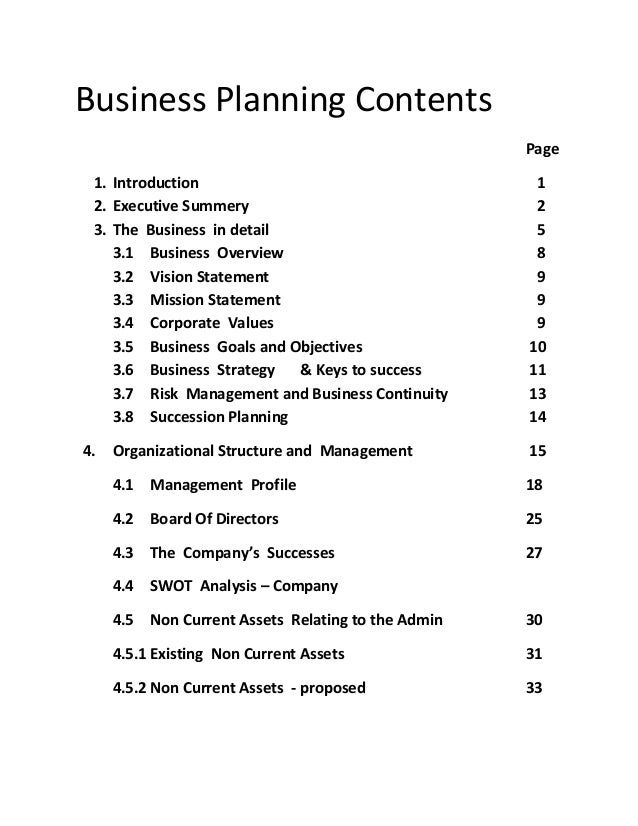What are the elements of a business plan
The key elements of a business plan are much the same,whether for a large business or a small business. This doesn't mean your business plan must be as thick as that of a Fortune company, but it should include the same elements found in the business plans of business giants such as GM, Apple, and CBS.
Regardless of your company's organization, lenders will want to know who is in charge what experience they have in this business, the extent of their ownership, and their record of accomplishment. Each member of management should provide a resume, which may be included in an appendix to the business plan, that includes unique experience, past record of accomplishment, any industry recognition or community involvement, how long they have been involved with your company, and their salary.

The names of the members of the Board of Directors along with their position on the board, the extent of their involvement with your company, their general background, and any contribution to the company's success should be discussed.
Marketing and Sales The marketing and sales element of the business plan should discuss your business's marketing penetration strategy, a strategy for growing the business once market penetration has been achieved, the subsequent channels of distribution and a communications strategy suitable for reaching your customers. This also should include an overall sales strategy that outlines your selling activities.

Product Description The description of your product or service begins with the way your product or service affects your customers. This description includes details concerning qualitative case study characteristics product life cycle, any intellectual property issues, and any research and development activities planned.
Financials You'll have to provide complete financial information as part of your business plan.

This is particularly important if you are making a request for funding. Begin your market analysis by defining the market in terms of size, structure, growth prospects, trends and sales potential. This section should include a high level look at how all of the different elements of your business fit together.

The company description should include information about the nature of your business as well as the crucial factors that you believe will make your business a success. This section includes your company's organizational structure, details about the ownership of your company, descriptions of your management team and qualifications of your panel of experts or board of directors.
The Elements of Business Plan - Entroids by Entroids - issuu
This is the lifeblood of your business. Marketing creates customers and customers generate sales.

In this section, define your marketing strategies. Start with strategies, tactics and channels that you have used to create your greatest successes.

Next, branch out to others that may be working for your competitors. Remember that this section will be constantly updated based on your results. In this section describe your service and product. What is it that you are actually selling? Make sure to emphasize the benefits not the features.
The Elements of a Good Business Plan
Establish your unique selling proposition. This means you homework basic parent functions to show not only how your product is different but also why it is better.
In this section state the amount of funding you will need to start or expand your business. Include best and worst case scenarios. You should include three to five years of historical data. A good business plan is never meant to be written once.
Key Elements of a Business Plan
And a good businessperson understands that this plan evolves as your business evolves and as your environment changes, as marketing campaigns exceed expectations or fail to meet your assumptions. An even worse mistake can be a business plan that includes a restrictive NDA. Hammering down the basics of your business, everything from a personnel onboarding plan to securing the proper name rights and trademarks, will ensure no important detail is left unchecked.
In her book, Schenck says that there are must-do tasks to make the business plan a useful document: Describe the product or service.

Describe the competitive environment of the product. Describe how the business will make money through a business model.

Describe how to market the business. Describe the financial projection, including how much money you need and how much money you will profit.
